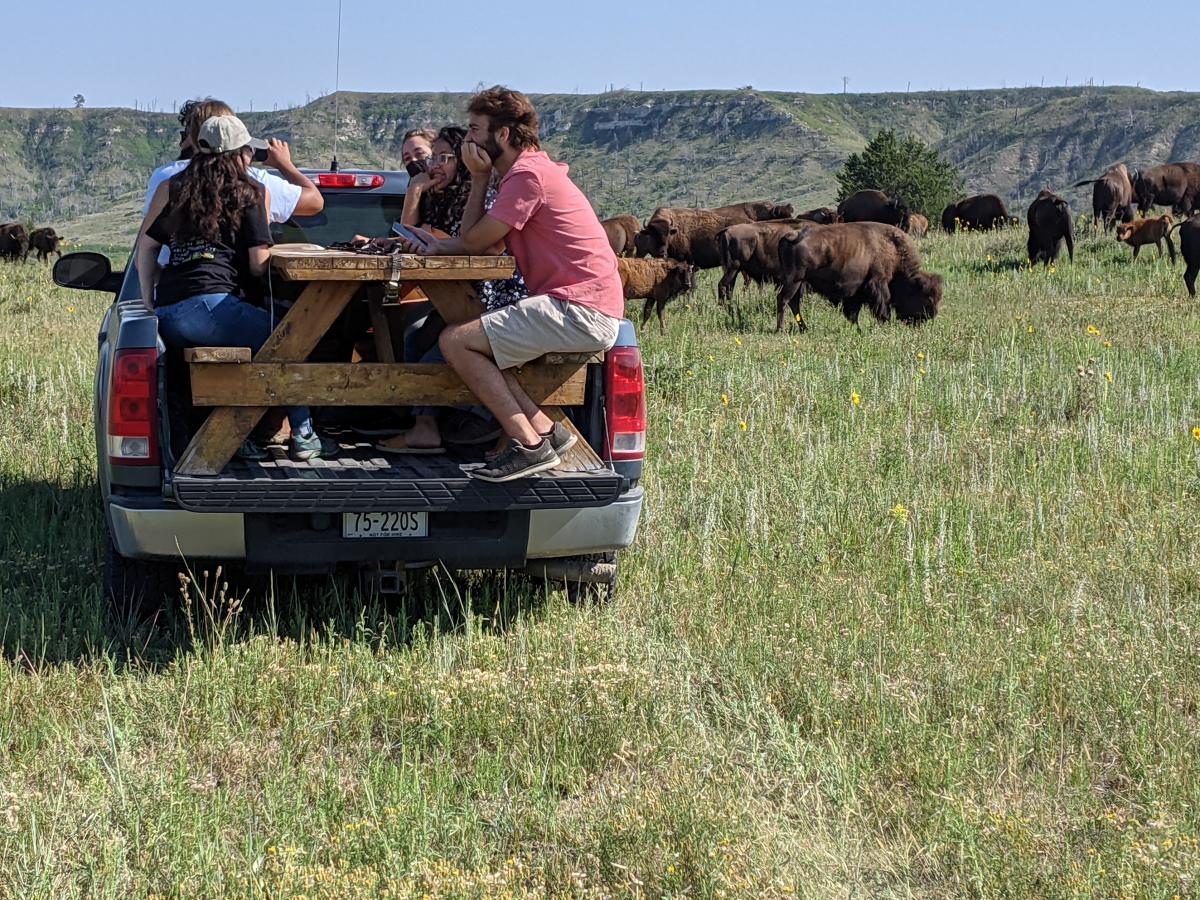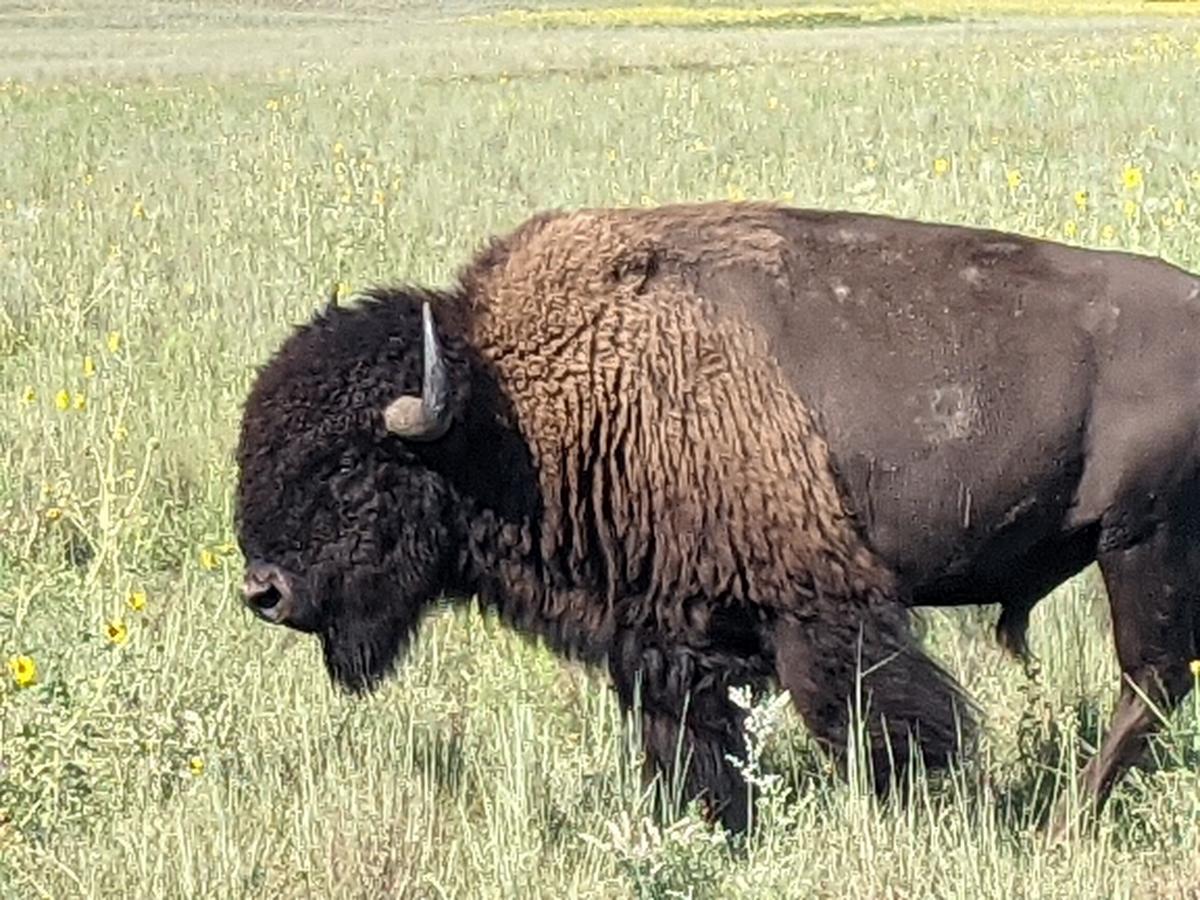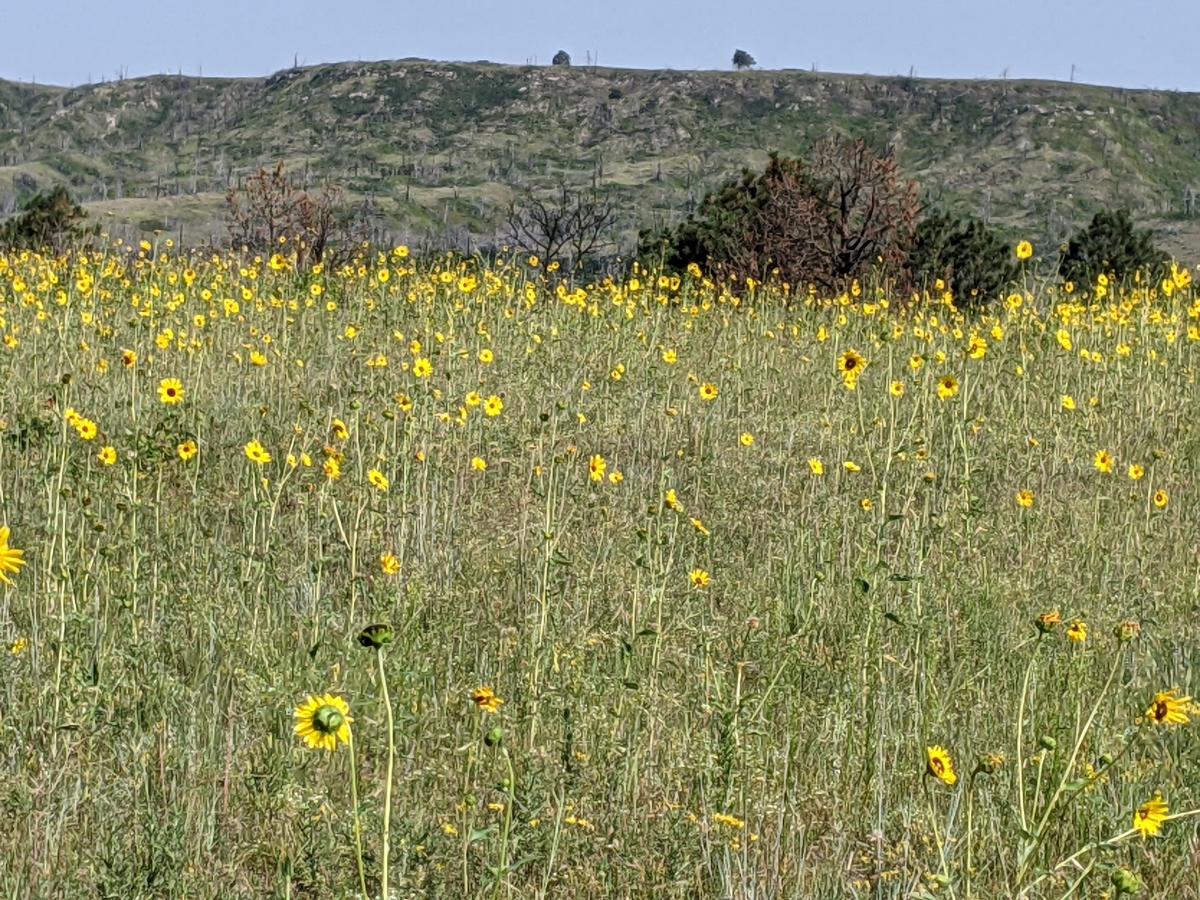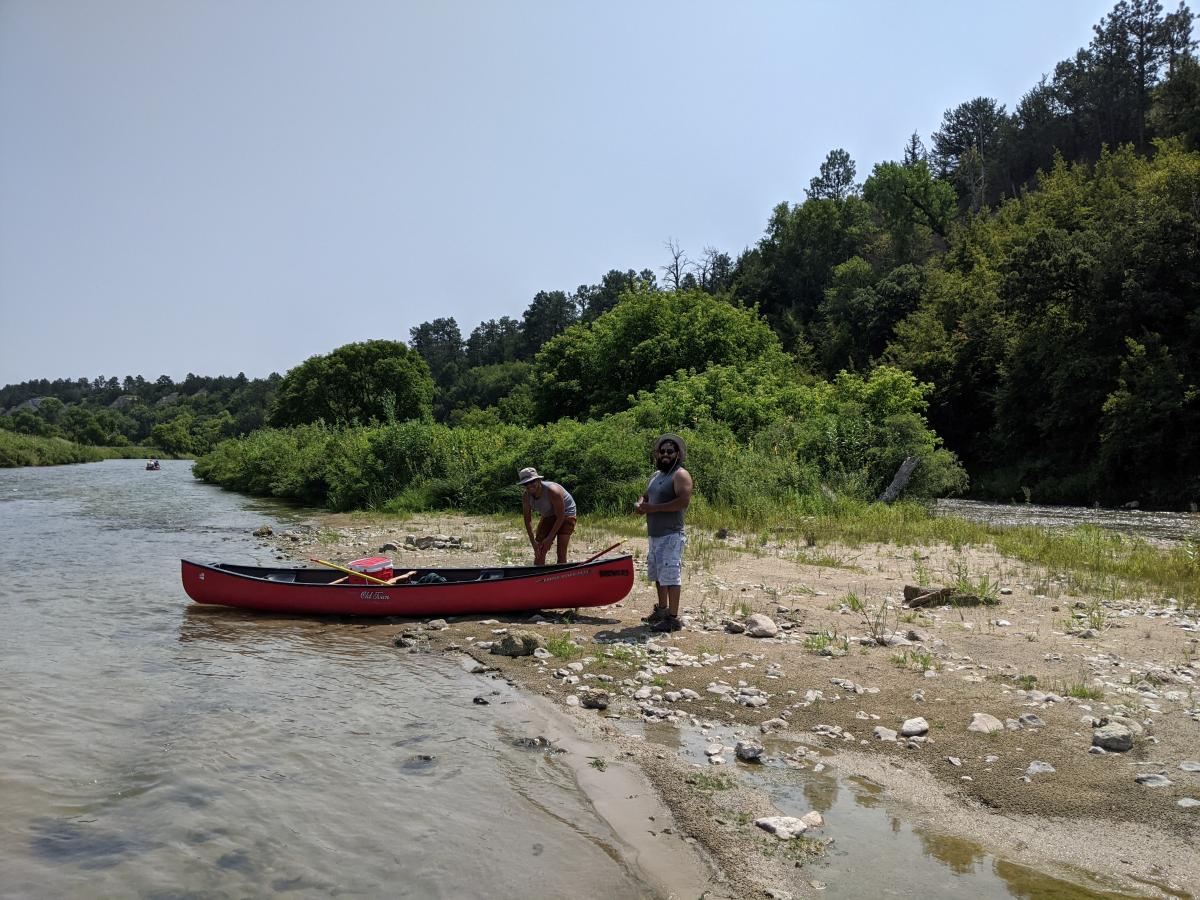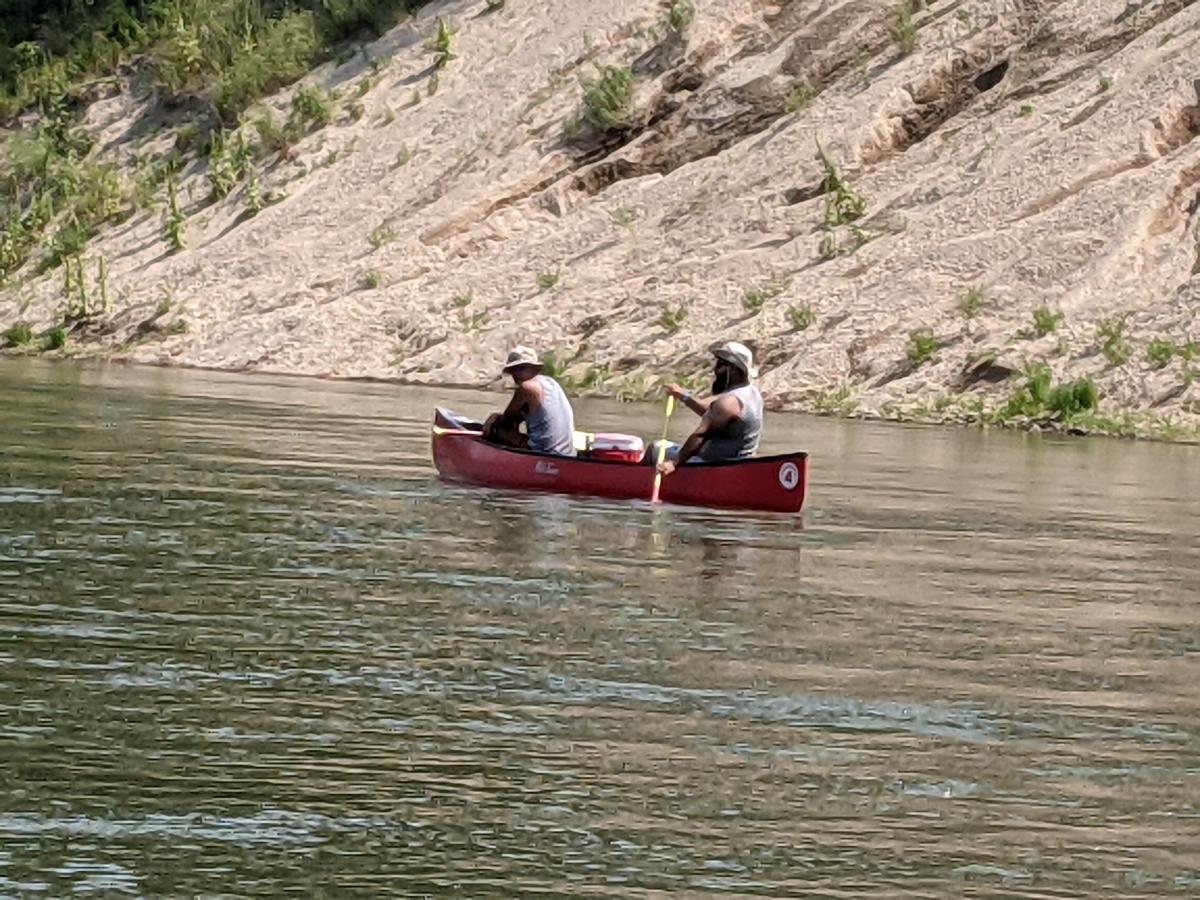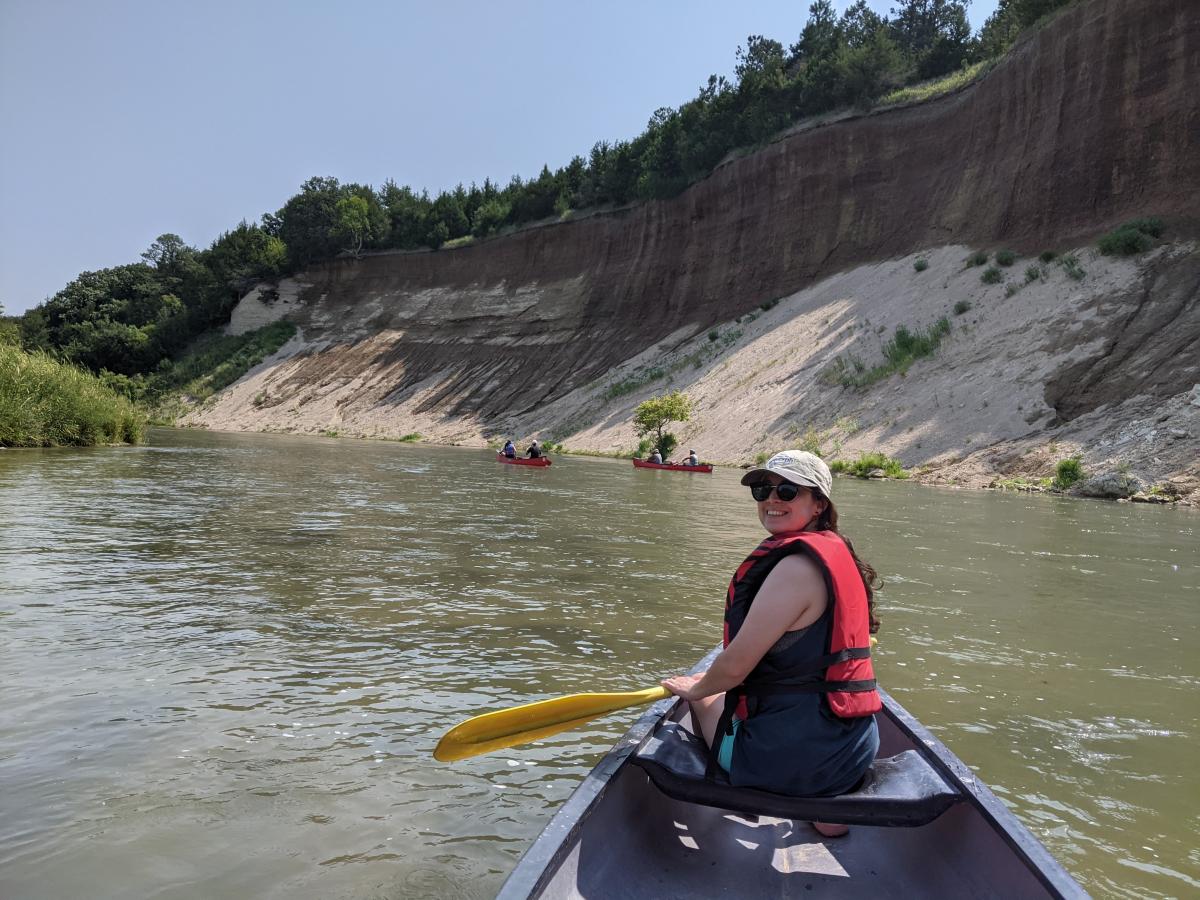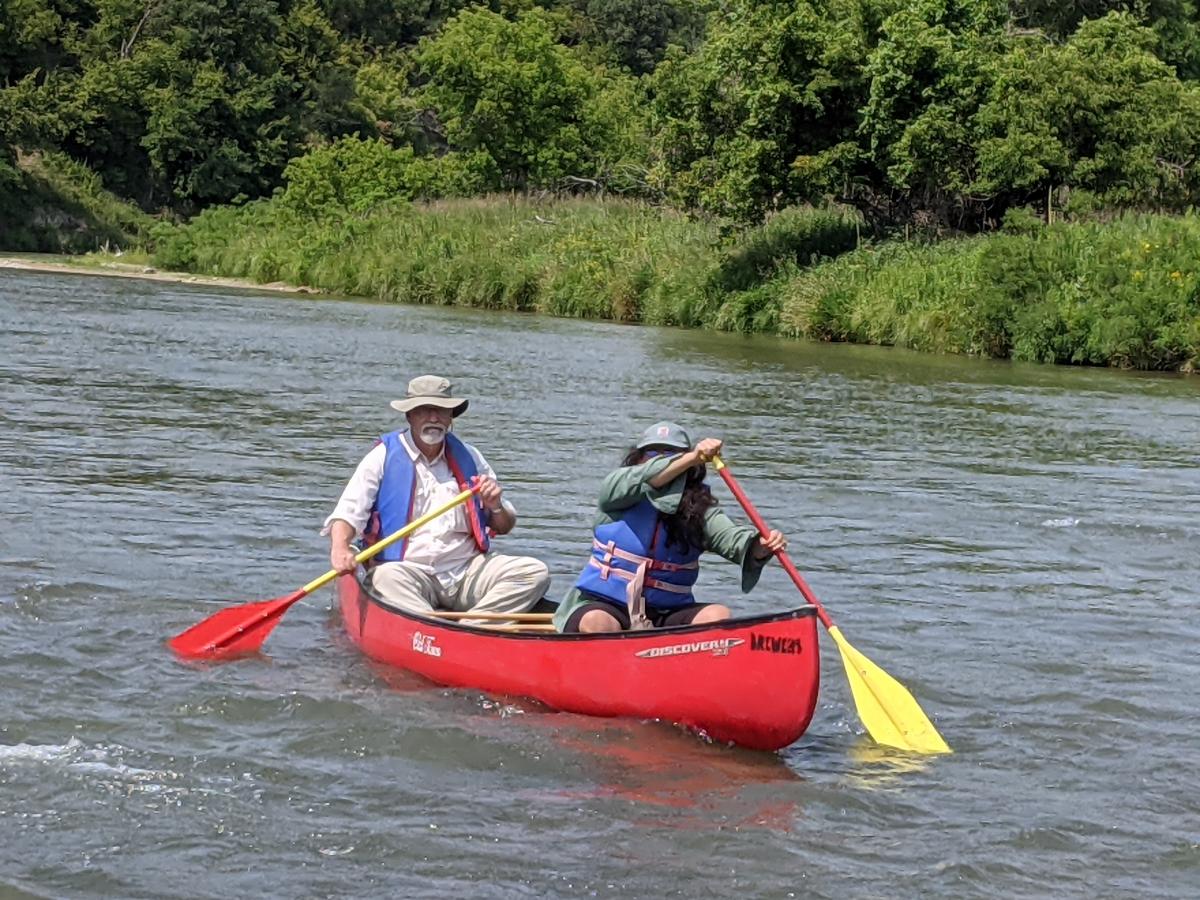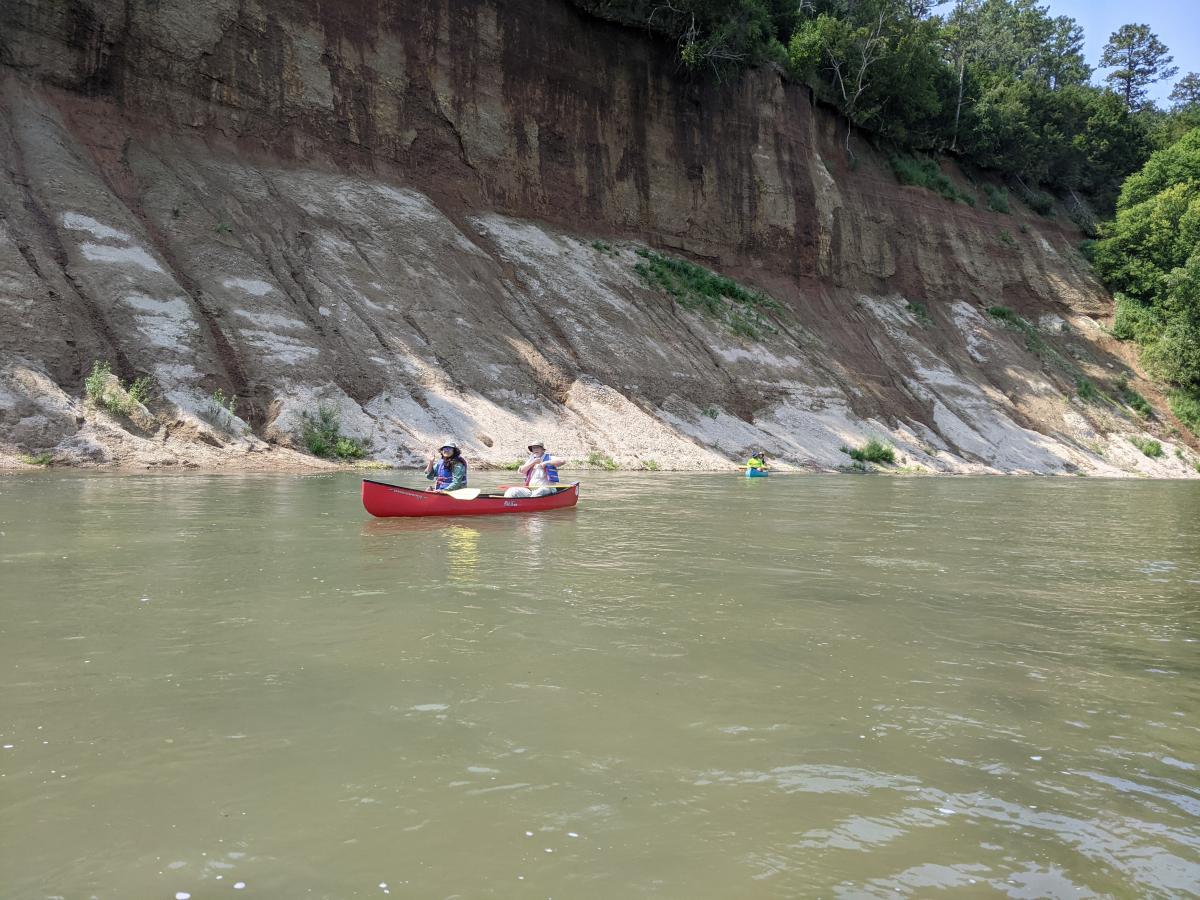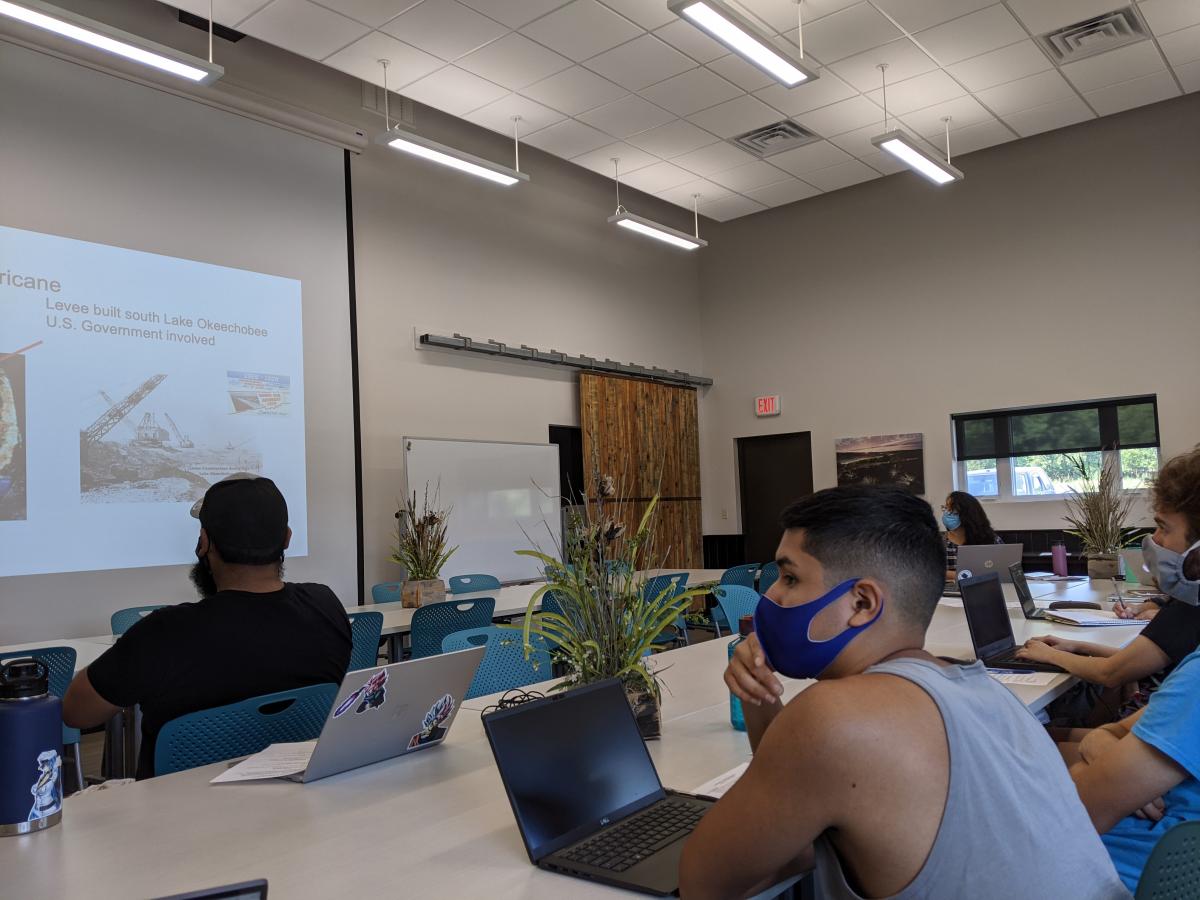Professor Craig Allen and the NRT welcomed new and returning students August 8-12 with canoeing, a bison safari and a class in adaptive management, all at the Niobrara Preserve near Valentine.
“What was good on this was exactly what we had planned, which was to get students out together, away from all the Covid craziness, and to get to know one another and get an in-person chance to meet and interact,” Allen said.
Since the 2020-2021 school year at Nebraska was almost completely virtual, some of the students entering graduate school last year had not met others face to face. Such was the case for master’s students Alexis Chavez and Dominic Cristiano, who met in person for the first time this August.
“It was great to get to know more about Alexis and his family in Florida after only having conversations about natural resources over Zoom beforehand,” Cristiano said.
Ten of the 12 students currently funded by the NRT came to Nebraska from other states, often not knowing anyone else here and sometimes never having visited the state before. The Niobrara trip gave them a chance to not only get to know one another but gain a broader view of Nebraska.
“The preserve is stunning, so it’s eye-opening for people who just think of Nebraska as corn production because it’s very different from the Sandhills to the Niobrara,” Allen said. “The Sandhills are a huge component of this state that so many people aren’t that familiar with.”
Master’s student Kate Bird, who came to Nebraska from Oregon last year, said she noted the distinctness of the landscape in the preserve especially while canoeing with the group on the Niobrara River on Monday.
“The landscape around the Niobrara is very unique, and being on the water provided a new perspective from which we could observe it,” she said.
The professors and students launched from Cornell Bridge at Fort Niobrara National Wildlife Refuge and traveled 23 miles, spending six hours on the river and observing the towering banks of the Niobrara, the Ponderosa Pine trees and paper birch not found in other parts of the state, and the swallow colonies built into the sides of the cliffs.
At the Niobrara Preserve, the students also took the “Applications of Adaptive Governance and Management” three-day course in person with Lance Gunderson, Emory University professor and adaptive management expert. All wore masks and maintained social distancing.
“Lance provided us with real world examples of governing groups’ attempts at implementing adaptive governance approaches to resource management, highlighting which aspects of their approaches worked well and which could be avoided in future situations,” Cristiano said.
Adaptive management is a shorthand term for “learning by doing,” Allen explained.
“It’s basically a process that treats management as hypotheses so that you go forward in a structured way and lessen the uncertainty of success and of treating those management alternatives as hypotheses and experiments,” he said.
The preserve manages its grasslands using bison, cattle and fire, and students had the rare opportunity to drive out and view a large herd of bison up close.
“I had seen bison before at Pioneers Park in Lincoln, but seeing such a large number of them up-close at the Niobrara Valley Preserve was a very different experience,” Bird said. “The herd included some calves that were only a few weeks old, and we were able to learn about how the preserve manages the herd and a bit about bison behavior.”
Allen said bison differ greatly from cattle in the way they move on land.
“Bison are fluid,” he said. “They’re moving in; they’re moving out. Their behavior is so different from cattle that it was hard to tell how many we saw in the Sandhills. They came over the hill, and you had a little group of 10 running, and then another group. They were all over the landscape.”
This is the type of experience that cannot be captured virtually, and Allen said he was glad to be able to provide it to NRT students despite the pandemic.
“It was a nice way to start the semester, to get people out to see the Sandhills, Ponderosa pine, and the wild and scenic river, which you wouldn’t imagine is in Nebraska if you only experienced the Lincoln area. It was cool.”
The trip inspired natural resources student Daniel Morales to pen a poem of his memories from it, “The Beauty of the Prairie and Its Bison.”
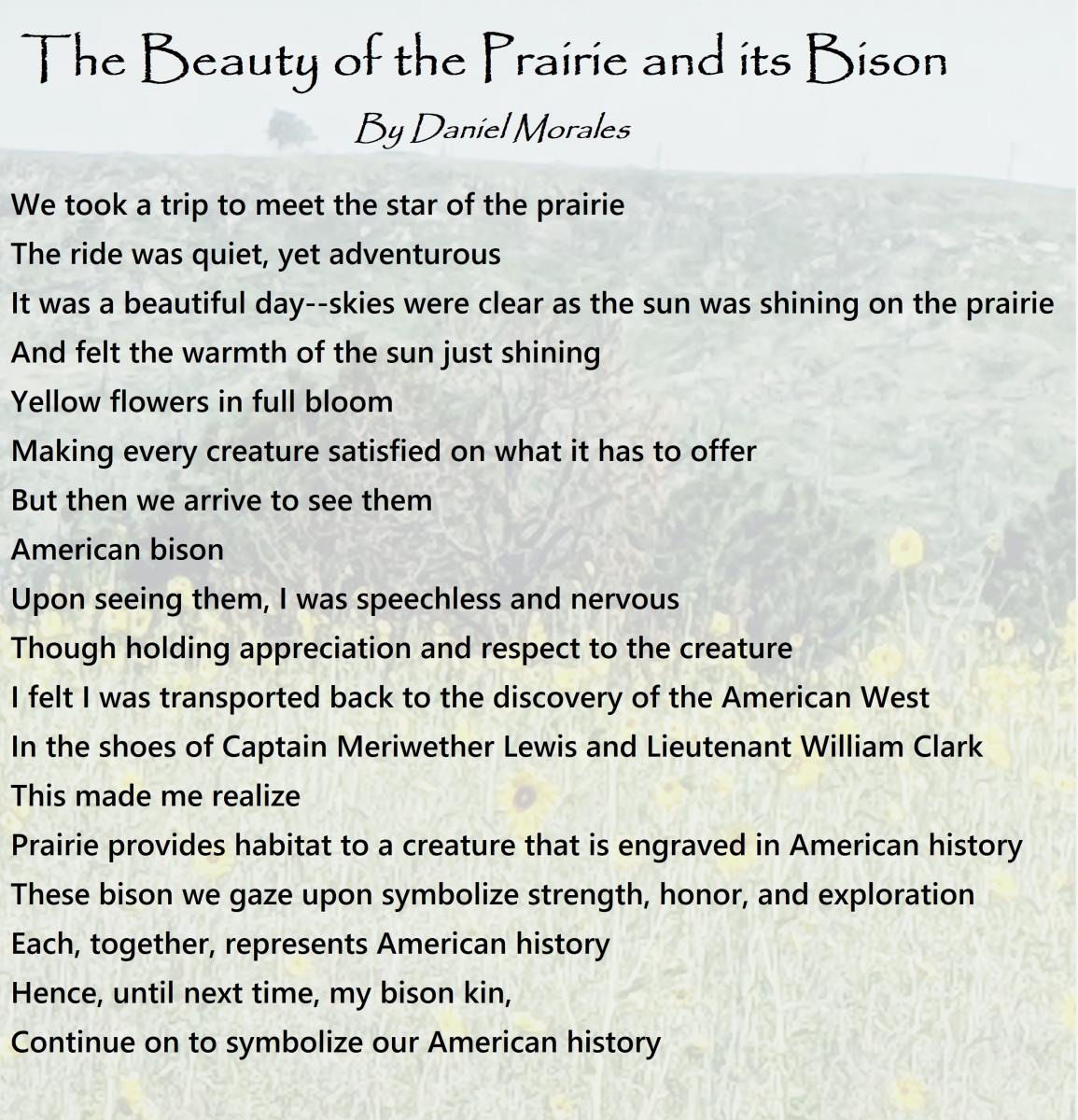
̶ Ronica Stromberg, NRT Program Coordinator
